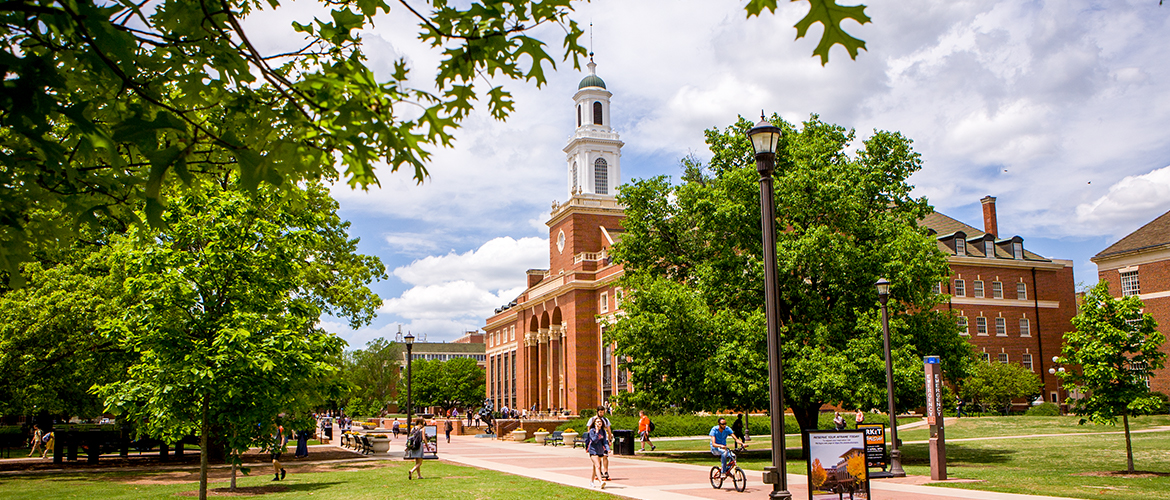
OSU/A&M Regents approve FY19 budget for OSU System
Friday, June 22, 2018
Updated December 6, 2018 to reflect current budget and available revenue.
The OSU/A&M Board of Regents approved an operating budget for the Oklahoma State University system today for FY2019 during its regularly scheduled meeting on the OSU-Oklahoma City campus.
This year’s $1.325 billion budget includes an increase in tuition for each of the OSU branch campuses. OSU campuses in Stillwater and Tulsa will see a 3.2 percent increase in tuition and mandatory fees.
“Our board recognizes the impact tuition increases have on our students and their families,” said OSU/A&M Board of Regents Chair Doug Burns. “Balancing the lack of state appropriations, the cost to students, and ensuring our institutions are maintaining high educational standards is a difficult task. I would like to commend our administrators and campus leaders for their work to make sure our institutions remain affordable.”
The Regents were pleased the legislature did not cut state funding for higher education this year. Appropriations for FY2019 follow four years in which Oklahoma higher education received the largest percentage decrease in funding in the nation.
Since FY2015, state appropriations to the OSU system decreased more than $58.575 million or 24.3 percent. Despite decreases in state appropriations, the average annual increase in tuition and mandatory fees on the Stillwater campus since FY10 is 3.2 percent, including no increases in FY10, FY14 and FY15.
“I can assure our students and families raising tuition is never the preferred choice,” said OSU President Burns Hargis. “I am proud to say even with this year’s increase, the cost of in-state tuition and mandatory fees at OSU is the lowest of any public research university in Oklahoma and is less expensive than most peer institutions in surrounding states.”
OSU remains one of the best values in the nation. It is below the average cost of universities in the Big 12 and 27 percent below the average of land-grant institutions across the U.S. Over the past several years OSU has increased scholarship dollars and offered other financial options to assist students. As a result, half of OSU students graduate with zero loan debt. The average debt amount for OSU graduates that do borrow is $24,095, significantly lower than the national average.
Aggressive cost-saving and efficiency efforts have helped drive OSU’s success in continuing to provide outstanding value. It has reduced energy, facility, retirement, administrative, service and other costs. Over the past decade, OSU has avoided more than $100 million in costs. In addition, OSU provides shared services for the A&M system as part of a system-wide cost reduction initiative.
OSU has prudently managed its debt and holds the best credit rating among Oklahoma higher education institutions.
In the midst of record enrollment growth, OSU has reduced full-time employees. Full-time employees per 100 students dropped from 21.9 in 2008 to 19.3 in 2017, a 12 percent decrease. OSU ‘s non-instructional staff count decreased by nearly 250 employees the past five years.
The money saved by OSU’s wide-reaching efforts is being invested in initiatives to support the core instructional mission of the university, including faculty recruitment and retention, student success, research, laboratories and technology.
“Recruiting and retaining faculty is key to ensuring our students receive the best possible educational experience,” Hargis said.
OSU’s budget will be presented to Oklahoma State Regents for Higher Education for approval. For the full budget presentation, click here.
Tuition and mandatory fee percentage and dollar increases for the fall 2019 academic year (dollar figure is based on 30 credit hours for undergraduate rates and 24 credit hours for graduate students):
OSU-Stillwater/Tulsa Undergraduate – Tuition and Mandatory Fees
Oklahoma residents – 3.2% ($281 annually)
Non-residents – 3.2% ($764 annually)
OSU-Stillwater/Tulsa Graduate -- Tuition and Mandatory Fees
Oklahoma residents – 3.2% ($263 annually)
Non-residents – 3.2% ($744 annually)
OSU Center for Veterinary Health Sciences
Oklahoma residents – 6.6% ($1,464 annually)
Non-residents – 5.8% ($2,723 annually)
OSU Institute for Technology
Oklahoma residents – 5.7% ($300 annually)
Non-residents – 2.8% ($300 annually)
OSU-OKC
Oklahoma residents – 5% ($213 annually)
Non-residents – 5% ($555 annually)
Center for Health Sciences
Graduate Oklahoma residents – 4.8% ($288 annually)
Graduate Non-residents – 3.7% ($767 annually)
Professional Oklahoma residents – 3.8% ($1,030 annually)
Professional non-residents – 4.9% ($2,600 annually)
